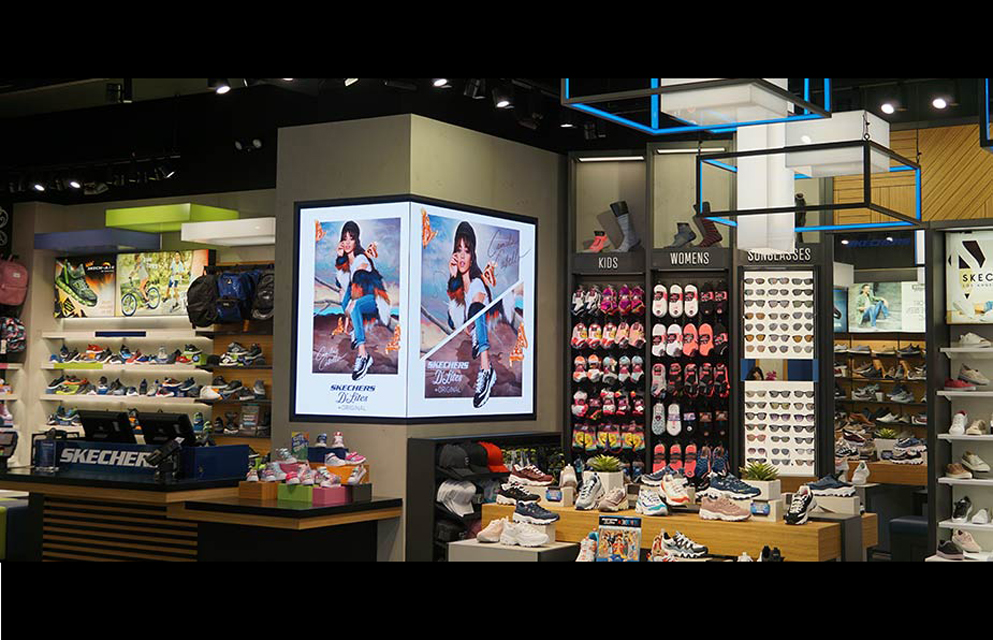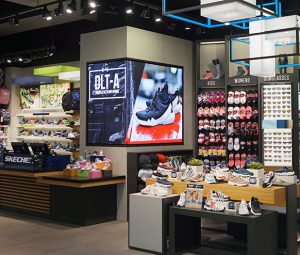After reading this article, if you’re interested in learning even more about indoor digital signage or hearing from shops who have successfully transitioned into this market, be sure to register for ISA’s THE LINK…Digital Signage panel on The Future of Digital Signage.
By Ashley Bray
According to Visix, 70% of Americans say they have seen a digital display in the past month. That same site also says 52% of Americans have seen a digital sign in the past week. Many of these digital signs are most likely outdoor displays, but as digital communications increase around the world, it only makes sense that the use of indoor digital displays will increase as well.

“I think that we’re going to find that end customers – the business owners – are going to become more savvy in the next five years, and they’re going to recognize the opportunity to have a fully integrated system that uses both outdoor and indoor signage. They want a control system that will control both seamlessly, and they want to be able to use similar messaging. They want that experience to be seamless,” says Taylor Nilson, market manager, On-Premise – Commercial Reseller & National Accounts, for Daktronics. “So the colors, and the background, and the content they see on the outdoor signage – they want to see those same things on the indoor signage. Then they’re going to try to blend that with their traditional marketing as well. Whether there’s TV advertising, or print, or radio, they want all those messages to coordinate and align.”
And who better to handle that coordination and alignment than sign companies?
Despite the opportunities, however, many sign shops have been hesitant to get involved with indoor digital signage. “There are a lot of sign companies that are sitting back out there and thinking, ‘Well I’m just not that interested in indoor applications. I’ve got my outdoor static signage, I’ve got my outdoor digital signage, and I’m pretty good in those areas, and that’s all I really need to do,’” says Nilson.
But settling for the status quo is the wrong mindset to take if sign companies want to stay competitive. “For those sign companies that are sitting back and thinking, ‘indoor signage really isn’t my thing,’ they may get edged out of projects where the end customer says, ‘yeah well I want it, and I want to work with a partner that can help me do it all, not just the outdoor stuff,” cautions Nilson. “We have to help sign companies understand that this is a huge opportunity for upscales and for larger projects, to increase the basket size for projects, and if they sit on the sidelines for some of these indoor applications, they may lose out on some projects.”
Nilson says the need and demand for indoor digital signage is greater now than ever before. Retail businesses especially need to give customers a reason to visit them, or consumers will just do all of their business online. In fact, Visix cited a statistic that found 80% of shoppers say they have entered a store because a digital sign caught their interest.
“We’ve been saying for a long time that brick-and-mortar retailers need to create a unique experience for customers to want to come to their location instead of just shopping online,” says Nilson. “Well now with COVID-19, and the pandemic, that is even more true than ever.”
From the client side, the need and the demand for indoor digital signage is there, but there may also be a reason within your own company to get involved with this market—aside from your bottom line. And that’s the need to attract talented and younger workers. Nilson believes that, ultimately, expanding into the digital sign market will help sign shops stay competitive by attracting a new and younger workforce that will propel shops forward in the industry.
“When I talk to sign companies and I ask, ‘What’s the biggest problem facing you today? How can Daktronics help you to be successful?’ The answers I get are about staffing, they’re about turnover, they’re about how can I get good qualified people that want to work in the signage industry?” says Nilson. “I think digital signage, and especially the indoor and more technologically complex applications, is a way to attract that younger workforce and show that sign companies aren’t just this stodgy welding and electrical company—they do fun and exciting and sophisticated technological things.”
Of course, a long list of reasons for why you should start offering interior digital signs doesn’t negate the challenges and hurdles to market entry that your sign company is surely aware of.
For one, the technology can be harder to understand and install on indoor projects—but not impossible. Aside from partnering with digital sign manufacturers to learn the ropes, Nilson recommends learning the best questions to ask a customer to learn how they will utilize the digital signage.
Some of these questions can include:
- How are they going to use the product? What are they going to do with it?
- What kind of sources of data do they want to hook up to (menu, streaming data, live feed, scheduled content, etc.)?
- Will there be any kind of audio integration?
“[It’s about] asking the right questions and understanding how the customer is going to utilize the equipment and then being able to understand what that means, especially from the control equipment side of things,” says Nilson. “We’re finding that there’s a fairly small percentage of sign companies today that are capable of asking the right questions and figuring the system correctly for the indoor applications. There’s a handful, and Daktronics is really interested in working with them. And we’re interested in other sign companies building that critical skill set.”
This is where competition from A/V integrators—another hurdle—comes into play. But Nilson believes he is seeing the start of collaboration versus competition between sign shops and integrators. “There’s this interplay between the A/V integrator niche and the sign company niche, and it will be interesting to see how this shakes out over the next five years because I think that both business areas are starting to kind of encroach and cross over into each other’s territories,” he says. “There’s plenty of business out there to be had. We all need to find a way to positively work together and to either grow our respective skill set into areas we want to be in, or to work together and coordinate and work not competitively but collaboratively on projects.”










